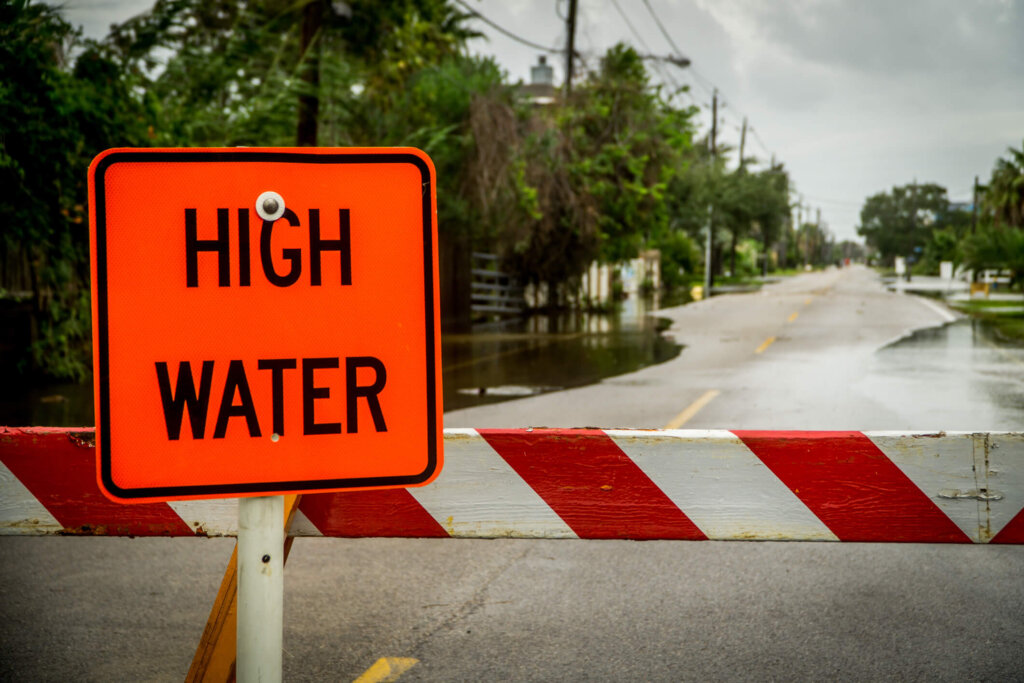Houston is a metropolitan city with much to offer investors. It has a diverse population, great job opportunities, and many cultural attractions.

But, it also has a specific geography that can pose challenges for investing in rental properties. Namely, many parts of Houston are vulnerable to flooding and can be more risky investments.
Before you buy a rental property in Houston, it’s essential to assess the risk of flooding in the area. While some neighborhoods are more inclined to flooding than others, there are several steps you can take to determine if a property is at risk.
The Dangers of Flood-Prone Areas in Houston
Houston, Texas, is in the low-lying terrain of the Gulf Coastal Plain. The city’s elevation ranges from 50 to 150 feet above sea level, making it prone to flooding and other water-related disasters.
When the Gulf Coast experiences powerful hurricanes, like Harvey and Imelda, or intense thunderstorms, areas are at risk of flooding. In addition to causing damage and destruction, flooding can have long-term effects on property values and rental income.
Unfortunately, this has made property in flood-prone Houston areas especially risky for investors looking for rental property.
Houston Flood Plain Terminology
Houston’s real estate disclosure forms often contain terms related to the region’s flooding risk, including FEMA Flood Zones and Coastal Barriers Resources System (CBRS) areas.
The Federal Emergency Management Agency (FEMA) divides Houston into zones based on their propensity for flooding. Owners must purchase flood insurance for properties in high-risk flood zones.
CBRS areas are like FEMA’s high-risk zones but protect coastal wetlands from development. Properties in CBRS areas may require additional federal permits before construction can begin, as well as specialized flood insurance requirements.
Investors should familiarize themselves with these terms before investing in Houston rental properties:
100-year Floodplain
– This refers to areas with a 1% or greater chance of flooding in any given year.
500-year Floodplain
– This term indicates an area has up to a 0.2% chance of flooding in any given year.
Floodway
– Refers to a waterway or body of water that serves as a conduit for most flood waters in the area. These areas are heavily regulated, and investors should avoid this area.
Reservoir
– This area is built to retain water or store floodwaters to protect local communities from floods. Areas around reservoirs are often susceptible to flooding, so investors should be wary.
Understanding the Risk of Flooding Before Investing in Rental Property

When investing in rental property in Houston, it’s essential to understand the potential risks associated with flood-prone areas before making an investment decision. It’s vital to research local flood maps and government records for information about past floods and their effects on surrounding properties.
Additionally, use insurance to protect your investment should you decide to move forward with a purchase. Consider getting homeowner and flood insurance through the National Flood Insurance Program (NFIP).
Finally, utilize professional assistance from a real estate agent or broker knowledgeable about potential flood risks in your desired location before making any decisions regarding purchasing rental property in Houston.
Strategies To Avoid Buying an At-Risk Rental Property in Houston
Before you buy a rental property in Houston, it’s crucial to assess the risk of flooding in the area. While some neighborhoods are more likely to flood than others, there are several steps you can take to determine if a property is at risk:
- Check with local authorities – Local authorities will have up-to-date information on which neighborhoods and properties may be at risk.
- Research the property’s history – Check with the county assessor’s office or contact local real estate agents to find out if a property has experienced flooding in the past.
- Visit the property – Observe how water drains around it during heavy rain. If you notice significant pooling or see the ground saturated with water, this may indicate a potential flooding risk.
- Have a professional inspect the property – Hire an experienced and reputable inspector to assess the property’s risk of flooding. They can identify potential flood hazards and advise if repairs or other measures are necessary to reduce the risk.
- Use a real estate agent or broker – A real estate agent or broker can provide valuable insight into the area, such as local flood zones and potential risks associated with investing in a specific property.
Investing in rental properties is never without risk. However, understanding the risk of flooding in Houston before investing can help protect your investment and keep you safe. By following these tips, you can be better prepared to make an informed decision when purchasing rental property in Houston.
Residential Leasing & Management Corp can help you make an informed decision about investing in Houston rental property.

We will provide detailed information about the local area, including potential flood risks.
Contact us today to learn how we can help you locate the perfect rental property for your investment portfolio.





